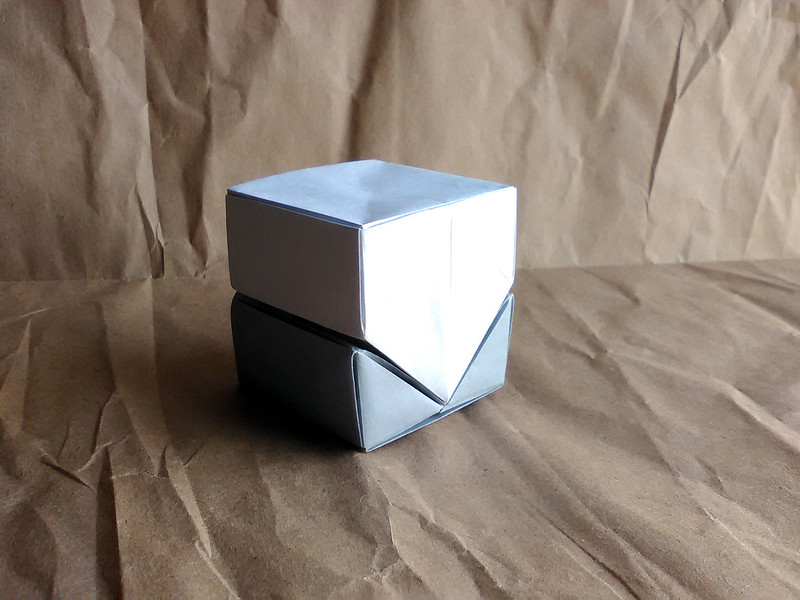Seven years ago, I attempted to fold a geometric shaped known as a k-dron. Although I didn't mention it in that blog post, much of the "design" work was just free folding to get a final shape that looked right. It's safe to say that I wasn't really satisfied with the end product but I posted it online anyway (as I often did then).
Last week, I found out about the Weaire-Phelan structure which is (at the moment) the most efficient known unit for closed packing of 3D space (in terms of surface area to volume). I soon started trying to figure out it's structure and symmetry. After a while I thought about how it might be folded, considering it has both concave and convex parts. This lead me back to the k-dron, which has a single convex point.
My k-dron work this time consisted of me working with accurate angles and proportions on Inkscape. After a couple trials, I figured noticed the following: To use paper efficiently, if two sides of a face don't match up I at least need to have the vertices matching, which may mean "cutting" a face and pleating it together. This is a bit clearer from the following image.

The above image shows how I decided to split the central face of the model in order to match the vertices with the sides. I also split the five-sided face so that I could match edges. I first drew the layout for a 14x14 grid, then added a unit all around to be folded inside and lock the model. Keeping the bottom triangles at a 90 degree angle with the sides, I noticed several different references for the model, shown as black lines. Most are just extensions of folds matching with a grid line. The most important are the references circled in red. Two points on the grid lead to a very good approximation of the angle. From those lines all the rest of the difficult angles can be folded. Based on those references, I drew this CP:

The model didn't really satisfy me without a bottom face, so I decided to make a base to fit it.

The two parts fit together similar to a masu box. I know that I could achieve a similar result by using a longer rectangle but the base gives some added support to the model. The result is quite nice, with only two seams showing on the full surface area. The real magic comes from making two units, which fit together to make a cube without gaps.


I realized afterwards that, like the Weaire-Phelan structure that started my thoughts about geometry, the k-dron will also span 3D space because two of them make a cube. I'm glad that inspiration managed it break it's way through the "folder's block," and with any luck it might persist. I've had a lot of ideas in the past year so it's only a matter of deciding how to fold them.


No comments:
Post a Comment